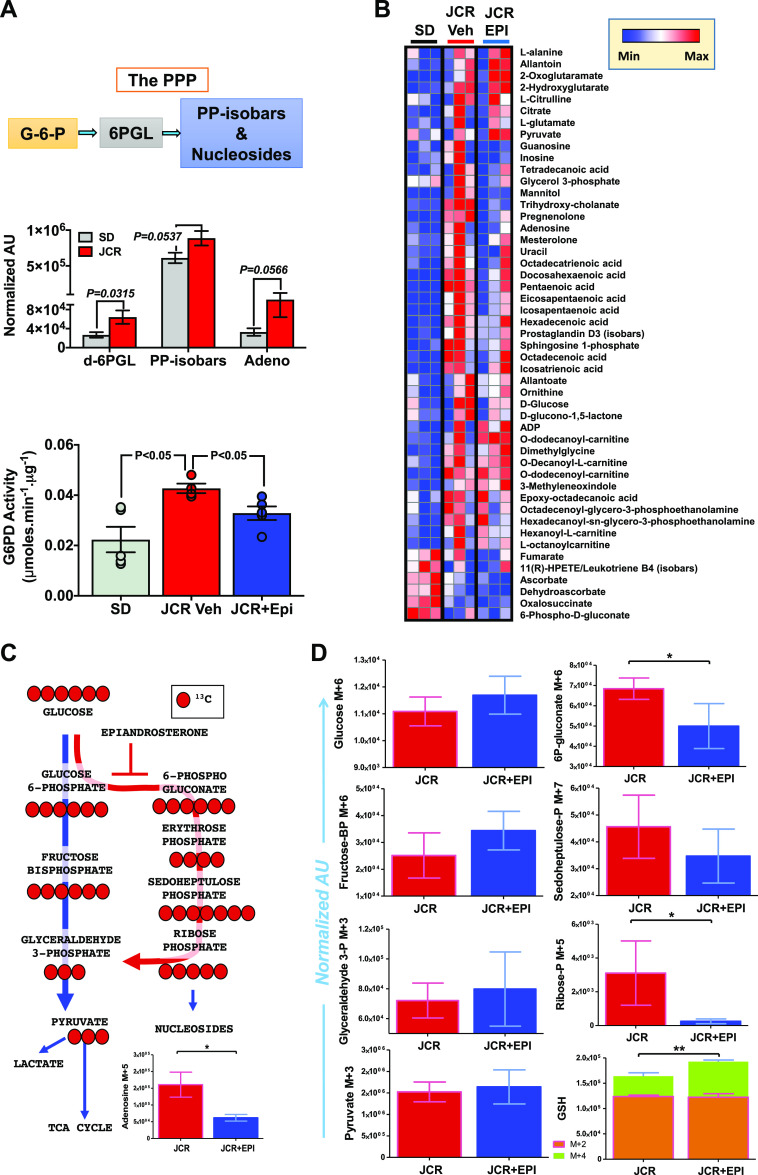Figure 4.
Epiandrosterone (EPI) decreases glucose-6-phosphate dehydrogenase (G6PD) activity and glucose flux through the pentose phosphate pathway (PPP) and increases glutathione in aortas from JCR rats. A, top: 6-phospho-d-gluconate (6PGL), pentose phosphate isobars (PP-isobars), and adenosine (nucleoside) are increased in aortas from JCR vs. Sprague-Dawley (SD) rats (n = 5–7 samples in each group). Bottom: G6PD activity in aortas from SD rats (n = 5 samples), JCR rats treated with vehicle (n = 3 samples), and JCR rats treated with EPI (30 mg/kg/day; JCR-Epi, n = 5 samples) is shown. EPI decreased G6PD activity. B: heat map (blue to red = low to high levels of metabolites in that pathway across all replicates) showing that some metabolites in purine, other sugars, bile, and fatty acid metabolic pathways are reduced by inhibition of G6PD by EPI (n = 3 samples/group). C: 13C-glucose pulse chase tracing experiments in aortas from JCR rats treated with vehicle (n = 3 samples) or EPI (n = 3 samples) show that glucose flux through the PPP and nucleoside levels are decreased. D: graphical representation of the effects of G6PD inhibition on the indicated PPP intermediates and glutathione (GSH) homeostasis tracked by 13C-glucose pulse chase tracing experiments in JCR rats treated with vehicle or EPI (n = 3 samples/group). AU, arbitrary units. *P < 0.05 and **P < 0.01.

